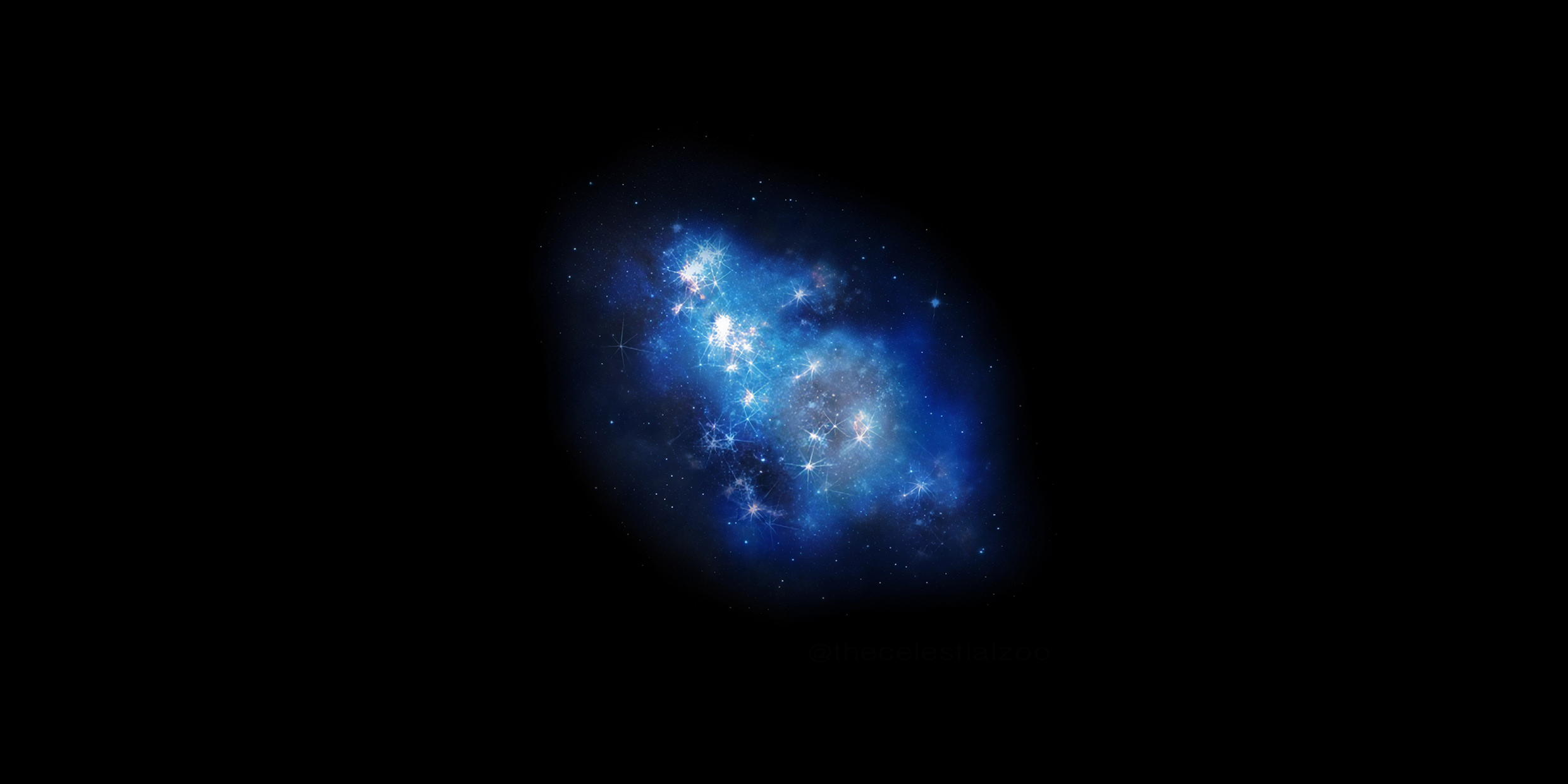Originally published 3 May 1999
A few weeks ago [in 1999], astronomers using the Hubble Space Telescope said they discovered the most distant object yet observed in the universe — a galaxy 13 billion light-years from Earth.
Because the galaxy — dubbed “Sharon” after the sister of one of its discoverers — is so far away, and because light takes time to travel the distance between us, we see it as it existed when the universe was only 5 percent of its present age, not long after the first galaxies and stars condensed from the primeval gas.
Detection of such galaxies is a considerable technical achievement, not only because they are so faint and far away. Because distant galaxies share in the universe’s expansion, their light is stretched into parts of the spectrum that are absorbed by interstellar nebulae that lie along our line of sight and by the Earth’s atmosphere. Only with a telescope above the atmosphere is detection possible at all.
What do we learn from such faraway galaxies?
So far, not much. These galaxies appear as mere dots of light, and little can be deduced about their structure or composition.
But astronomers have theoretical ideas about what these early galaxies might be like.
For one thing, theories of the Big Bang suggest that only hydrogen and helium atoms condensed from the hot radiation of the Big Bang. No carbon, no oxygen, no nitrogen, no silicon, no iron.
Therefore, the first galaxies and stars were made of hydrogen and helium exclusively. The stars may have had planets, but only big gassy planets like Jupiter or Saturn. Without heavy elements there could have been no Earth-like planets, no rocky moons, no asteroids.
And, of course, no carbon based life.
In we could visit the Sharon Galaxy in the era in which we observe it, it would be a lively place, roiling with primeval energy, exploding with the violent deaths of hot massive stars. But nowhere among the worlds of that galaxy would we find sperm, egg, wing, flower, feather. Not only were the elements of life unavailable, but not enough time had elapsed for complex lifeforms to evolve.
The Sharon Galaxy presumably still exists somewhere in the universe today, 13 billion years older than it appears in the Hubble photograph. And what a different sort of galaxy it must be now.
Countless generation of massive stars have lived and died in the galaxy during the ensuing eons. As stars burn they fuse heavy elements from hydrogen and helium. When stars die explosively they make still more heavy elements and spew those atoms into the interstellar nebulae out of which new generations of stars will be born.
As time passed in the Sharon Galaxy, more and more heavy elements enriched the primeval gas mixture, until the most recent stars presumably contain a few percent of atoms like carbon, oxygen, and iron, and shepherd small planets made of rock, metal, water, and air.
Perhaps on one of those planets intelligent life has evolved and is looking our way. What would they see?
They would see our Milky Way Galaxy as a dot of light on the threshold of time, 13 billion years in the past — a galaxy without Earth-like planets, without life, without intelligence. They would see our galaxy in its infancy, hot and lively, stewing up the atoms that will someday compose the Sun, the Earth, the Hubble Space Telescope, and the bodies of the men and women who use the scope to explore cosmic history.
In other words, our galaxy would appear to Sharonites — if such exist — more or less as their galaxy appears to us.
Can we observe the Sharon Galaxy as it exists today?
Impossible. No conceivable information can pass back and forth between us. We can see that other galaxy in our space, but not in our time. We are sequestered in our present by the finite velocity of light.
However, we have reason to believe that the laws of nature are the same throughout the cosmos. So, in a sense, that dot of light 13 billion light-years away is “us” — or a galaxy very much like what our galaxy might have been like then.
The Hubble Space Telescope is humankind’s most effective time machine, an instrument that lets us see into what Shakespeare’s Prospero calls “the dark backward and abyss of time.”
As a species we are infinitely curious about our past, which is why we invest billions of dollars in a magnificent instrument that orbits 350 miles above the Earth and peers deeply into time.
That dot of light observed by the Hubble at the beginning of material creation is a faint glimpse of the cosmic forge in which our very atoms were created.
The current record holder for the oldest and most distantly observed galaxy is GN-z11, discovered in 2016. ‑Ed.



